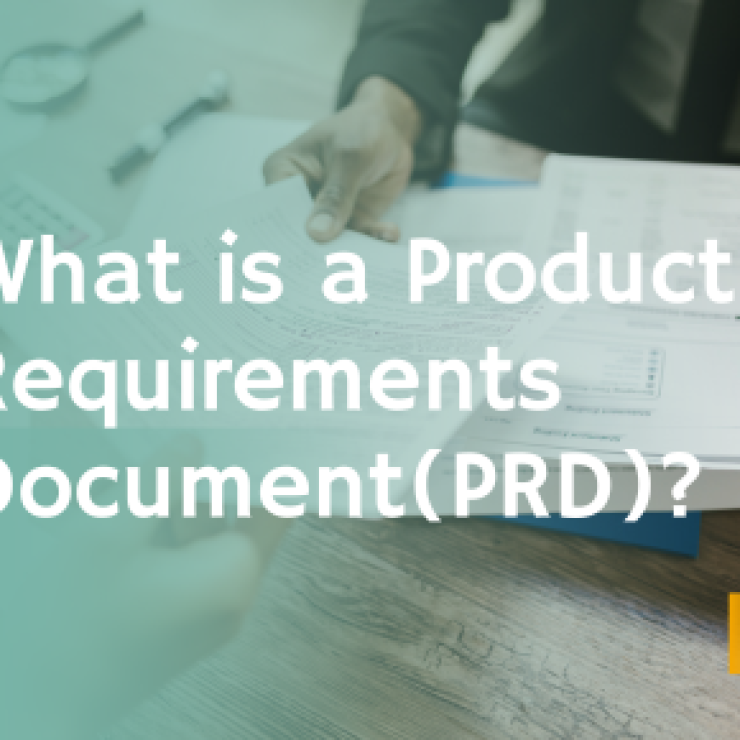Are you thinking of prioritizing your product backlog?
If you are a product manager managing the product in your company, you would be merely getting many choices every day. Your brain seems to be a dumping yard where you discard thousands of everyday ideas.
Not only ideas, but you would also come across an abundance of features requests, bug fixes, and tasks every day. With all these inputs coming to you regularly, you need to sort and manage them efficiently to use them effectively.
As a product manager, all you need in such circumstances are to create a product-relevant to-do list before integrating them into the backlog. The to-do list about the product will help you compare every aspect of its strategic value and check all the resources that the product will consume to become desirable.
Read the complete guide to discover why the product backlog has become void and how to prioritize the product backlog.
What is Your Product Backlog? Why Do You Need to Prioritize Your Product Backlog?
Your product backlog prioritization is a list that tells you about your product demands or product-relevant tasks that would make the product exclusive. Every product management team has to prioritize or clear these backlogs within a certain time.
However, before creating a unique product based on the backlog, you need to manage all the ideas, feedback, and roadmap to complete your product. However, you may find these ideas cluttered most of the time and messed up.
This is where you need to prioritize your backlog. Prioritizing backlog means arranging the ideas and tactics in a sequence to help you complete the task quicker. The prioritizing process helps you eliminate all the random thoughts every user has about your product.
With the product backlog prioritization, you will find a more structured and organized backlog that you can act on. It will highlight all the strategically imperative things for better product creation.
Professionals relevant to the hassles in the backlog have found a fitting tool that can help you prioritize all necessary backlog requests. Saasfe is one such tool that will help all product managers to stay organized and focus on creating a complete product, brings you feedback, and makes a roadmap and plan for proper execution.
Professionals have also discovered that inefficient backlogs are often the biggest interruptions in the path of product managers to complete a product. So, this is why after several types of research and real-time use, professionals have found Saasfe as the most befitting tool for prioritizing the backlog.
Now that you are quite aware of the significance of backlog and why you need to prioritize it. It is time for you to explore the tips that will help you prioritize your backlog efficiently.
Ways to Prioritize Your Backlog Better!
#1. Find Out a Bucket Approach of Organizing all Items in Your Backlog
In every backlog, several items make your product complete. Setting them to different categories will help you understand the roadmap to create a complete product. So, when you are working on the product backlog, you should always set them under various categories. You should choose the category’s name according to the backlog items’ importance.
Naming the category, however, doesn’t matter to you much, and all you will achieve is a clear overview of all the items. You can also work with a system that will help you scan exactly what you anticipate. As per professionals, Saasfe again would be helpful. It sets all your product-relevant under categories and finds you the exact product to-do idea you are searching for.
You can use the below categories to segment all product-relevant ideas.
- Based on size- Small/medium/large
- For type- Should have/could have/must do
- Based on status- To be refined/not prioritized/changed
- Based on the priority- Low/medium/high priority
Here are the steps to categorize your backlog items;
Step-1: Arrange All the Backlog Items by Category
When you are planning to complete your product with all product-relevant ideas, you first need to arrange the categories you are making of backlog items. You can create three categories and segment your backlog items based on the type. The goal is to easily understand and pick the right backlog item for your product.
In such cases, you need to arrange all the categories based on their importance and hierarchy. For example, when you are using priority as your category, you would always arrange them in the sequence as below:
Higher priority | second-level priority | Low priority | Bugs
When you arrange the category in the above, it would be easier for you to find all the backlog items that are more important to you.
Step-2: Tug Your Backlog Items into Sprint Workload
Sprint Workload is simply organizing your categories into even smaller packages. When you create a to-do list for your product, you need to arrange them with categories or subcategories. Failing to do so will lead you to create an unending list. Tugging them into sprints will help you manage all the complex backlog items.
The addition of sprint will offer you an additional level to work that again refines your prioritization backlog.
Pulling the backlog items further to the sprint workload will also assist the team in emphasizing what is more important. Now besides the team, who prioritizes product backlog?
It is the product manager. In such cases, the sprint workload helps the manager break the backlog items and structure of the to-do list to make them into the smallest pieces. The more you organize the categories into sprints, the better vision you can get.
2. Always Arrange the Top Items From Your Backlog Items to the Next Sprint
When you categorize your backlog items, it is evident that you would always want to focus on the to-do items that are more significant to your product completion. You cannot have all the items included in your product, and you need to move the top items from categories to the sprint in such cases.
Move only the items with a higher priority level without any internal dates. You can also use several mechanisms to move your top-priority backlog items to the next sprint.
3. Don’t Move Any Task Lower Than a Mid-Level Priority to the Next Sprint/Backlog
It is quite a straightforward backlog prioritization technique. When you move your tasks and backlog items from one category to sprint, you should avoid including any task that is lower than a mid-level priority. The segmentation of level two priority should be a cut-off for you. The idea of creating categories will usually support segments and streamline the ideas and backlog items.
When you eliminate the unnecessary backlog items, you cut down the unnecessary brainstorming meetings to complete the product. When you are having a meeting about how to prioritize a backlog, you cannot prioritize all the ideas, especially when you have a shorter timeline to complete your product. Maybe you can only extract and include two to four ideas, so why brainstorm for all other ideas.
In such cases, you should avoid moving the backlog items beyond the mid-level priority category. You should maintain your product backlog as decently as possible.
4. Create a Distinct List for Lower Priority Requests/Ideas
Moving all the higher-priority requests forward doesn’t mean you will discard all other ideas and backlog items. You can make a distinctive list for all your lower-priority backlog items. These are the ideas that you can implement in the long term. So, you can save them for later by creating a different list.
If you are a product manager who loves implementing impressive ideas, this product backlog prioritization technique can be your vault. There is no better place to review and reassess these ideas other than keeping them in a separate list.
5. Assign Marking System for Identifying the Value of Backlog Items
Making the backlog items quantifiable is a better approach to completing the product. Saasfe can be again a great scoring tool, as it assesses and evaluates the relevance of every idea to your product. However, you can also score them on your own. Professionals have discovered when there is a certain amount of timeline, budget, and mechanism, scoring helps product managers to attain backlog prioritization more easily.
However, while deciding the score, you should also always score based on the benefits you will get and the cost of the product backlog. This will assist you in creating an advised decision. When you have a categorized system of backlog prioritization, scoring becomes easier, and you can assign a score based on the significance more quicker.
6. Determine the Point System for Assigning Time and Development Resources to Every Item
One imperative determinant you should always contemplate is the time it will take to complete your product. That indulges complete product development time and includes which developer will work on which part of the product.
Then to make it seamless, you can use points instead of hours, days, or months. This will help you generate a better code for developing the product. Team communication will also enhance when you specify a point system for assigning time.
Apart from the development time, the development resources also need assigning points. Assigning points help you easily evaluate the resources used and make them uniform across the list.
Warning: While assigning points to the time of development and resources, you should be very careful. You should make it as easy as possible and convey the same to your team.
7. Re-Assess the Top Two Levels in Your Backlog Every Time
The last thing you should always keep in mind is reassessing the backlog. No doubt, your backlog is a real-time living document that can have priority changes with time. The priority on the top of the list can also move down. It all depends on the market dynamics and new entries of requests that you will get. In such cases, you need to evaluate your backlog every time.
After every spring, also make the top priority classification disappear by using them in your product development. That also implies; when the top priority vanishes, the backlog items from second-level priority also move up. So, you should assess and make these changes.
After reading the above report, you can probably figure out how to prioritize your backlog. As a product manager, you don’t get many timelines to use every request and prioritize it in the backlog.
However, you can use all the above tips to categorize your backlog items and simplify the process of product development. It would be best not to make your backlog a black hole and instead simplify it with the strategic approach of prioritizing the backlog. You can also use several tools to prioritize your backlog.
Saasfe is one such tool that simplifies your product development by offering you ease in backlog prioritization. It is a tool that eliminates the need for backlog. You can integrate the roadmap directly into your product.
You can get backlog items already segmented in different types; it includes feature requests management, idea management, internal feedback, and many more. So, it would be best if you use this advanced tool to automate your product development.
In conclusion, these are seven significant ways that help you prioritize your backlog efficiently. Now that you know all the tips, adapt them to your backlog, prioritizing approaches to saving time and resources. You can also use powerful tools to simplify the process of backlog prioritization.
Saasfe can help you with your product backlog prioritization; you can also book a free demo of the tool to check its features.




